Giant Hogweed Removal & Control

The overview
Latin name: Heracleum mantegazzianum
Giant hogweed originates from the Caucasus Mountains between Russia and Turkey and was introduced as a popular wetland ornamental plant in the 19th Century. The earliest records originate from the seed list at Kew Botanic Gardens in London which show that Heracleum persicum was received in 1819. It quickly spread as its large flower heads produced thousands of small light seeds that are easily spread by wind and water as well as by human activity including in some areas deliberate planting.
Giant hogweed is a perennial growing up from a single tap root to a height of 5m and with leaves of up to 1m. The plant can take several years to mature where it then flowers producing some 20,000 seeds on average before it dies.
Giant hogweed thrives on disturbance and has been spread by both natural means and by human activity. In riparian areas, high water flows disperse seeds of the plant downstream where new colonies form.
Who we help
We have a long track record of managing some of the most complex sites in the country and have worked with the Environment Agency on several large flood alleviation projects, as well as providing advice to the majority of house builders and developers in the UK.
Click here to view who we help







What’s the problem?
- Legal implications.
- Invasive non-native species.
- Rapidity of spread.
- Difficult to eradicate seed bank – may take years.
- Causes blistering of skin on contact.
What are the legal implications? *England
- You must not allow Giant hogweed to spread onto adjacent land – the owner of that land could take legal action against you.
- You must not allow or encourage the spread of Giant hogweed – this includes moving contaminated soil from one place to another or incorrectly handling and transporting contaminated material and cuttings.
- You do not need to notify anyone.
- You are not obliged to remove or treat on your own land.
Health hazards if not removed
The large size of the plant and the hollow stems make Giant hogweed very attractive to children who often use them as pea shooters and telescopes – however, the stems leaves and sap contains several photosensitizing furanocoumarins. In contact with the human skin and in combination with ultraviolet radiation, these compounds cause burning of the skin. After a period of about 24 hours flushing or reddening of the skin (erythema) and excessive accumulation of fluid in the skin (edema) appear, followed by an inflammatory reaction after three days. The reaction of the skin will also depend on individual’s sensitivity. Approximately one week later a hyperpigmentation (unusual darkening of the skin) occurs in the affected areas, which can last for months. The affected skin may remain sensitive to ultraviolet light for years.
All blistering should be treated as a burn and in severe cases, medical advice should be sought as untreated blistering can lead to permanent skin damage and recurrent dermatitis.
Biology and Ecology
Giant hogweed plants can live for several years but die after bearing seeds once. They persist in a rosette stage and usually flower in the third or fifth year. In unfavourable conditions flowering is postponed until sufficient reserves have been accumulated. Given such conditions plants can live for 12 years. On average, it flowers in the UK earlier than its native Caucasian range. They do not reproduce vegetatively and rely exclusively on reproduction by seed.
Flowers are arranged in compound umbels and are composed of insect-pollinated and hermaphrodite flowers (having both male and female parts in the same flower), the pollen grains mature before the female reproductive structure becomes receptive. Seeds normally result from fertilisation between two plants (outcrossing), but there is an overlap in male and female phases, which makes self-fertilization possible. Seeds produced by self-pollination are viable; more than half of them germinate and give rise to healthy seedlings. This means that even a single isolated plant, resulting from a long dispersal event, is capable of founding a new population. The plants flower from mid-June to late July and seeds are released from late August to October.
Identification
Spring – Dark green spiky leaves start growing very early in March/April reaching a height of 30 – 50cm.
Summer – The large hollow stems are ribbed and green in colour with purple blotches – large flower heads up to 50 cm across.
Autumn – Some immature plants may die back but many will keep some colour in their leaves through winter – mature flowering plants will die leaving seed heads with up to 20,000 seeds.
Giant hogweed is a particularly virile and aggressive weed, which propagates through seed, root and rhizome systems. It has the ability to establish growth from very small quantities of this material and therefore all processes of control and eradication must take account of this ability. An understanding of the plants flowering biology and mechanisms of reproduction is crucial for successful eradication.
- Plants do not flower until the second, third or even fourth year. Some plants are monocarpic and die back after flowering, others are perennial and flower for several years.
- By mid-April, mature plants are 3 – 4 feet tall and up to three feet wide. Seedlings are 300 – 450mm tall with leaves that are much more palmate than the mature plant.
- By May, the mature plant starts to bolt sending a thick hollow stem up to a height of 2 to 3 metres.
- Flowering starts from mid-May to mid-June and lasts from several weeks to more than a month.
- Green fruits form by July and then turn brown as they ripen.
- From late August through September the plants become senescent, dying back to the roots. The dried stalk and bare flower stems will persist through autumn and winter.
- Winged seeds are dispersed by water and soil movement.
Giant Hogweed – The Facts
Giant hogweed is a foreign invader that prevents native species from growing. Under the Wildlife and Countryside Act 1981/ Wildlife (Northern Ireland) Order it is an ‘offence to plant or otherwise cause Giant hogweed to grow in the wild’. This includes spreading the species or transferring polluted ground material from one area to another.
- Any Giant hogweed polluted soil or plant material should be classed as controlled waste and should be accompanied by appropriate waste transfer documentation.
- Giant hogweed should be disposed of at a licensed landfill site.
- Due to the density of stands, Giant hogweed has major safety implications. Footpaths and other amenity areas can be rendered unusable by the presence of this species.
- When Giant hogweed dies back during winter months it leaves bare ground – this can lead to increased soil erosion on river banks and steep slopes.
- Giant hogweed acts as a host for the Carrot fly and the plant disease Sclerotinia sclerotiorum, both of which attack a number of horticultural and arable crops.
Control and Removal of Giant Hogweed
Spraying – chemical application is the most effective treatment available, although it can take several years to eradicate this species if the plants are well established. The seed bank may contain thousands of seeds in the ground adjacent to the flower heads. Spraying should ideally be carried out during the growing season (March to August) when there is green leafy material present. Giant hogweed seeds can remain in the soil for several years, therefore, a long-term strategy involving herbicide treatment is recommended.
Excavation – A quicker method of removing Giant hogweed involves the clearing of surface growth and the removal of ground material polluted with roots and seeds. Due to the risk of contact with sap from the plant, removal by hand should be restricted and not considered once the plant has grown above 1 metre in height.
Measures to reduce the risk of any cutting and removal works should include but are not limited to:
- The establishment of an exclusion zone around any Giant hogweed plants identified on site and around any cutting/removal works. Only personnel involved in the removal of this species should be permitted entry to this exclusion zone;
- Risk associated with this species should be outlined to employees prior to work commencing;
- The use of full wet weather clothing with gloves and face visor or similar to undertake any cutting or removal of this species;
- The provision of washing facilities and eyewash for operatives involved with the works.
What to do?
Spraying – chemical application is the most preventive countermeasures should include the prohibition of seed input and the regulation of habitat quality in areas prone to Giant hogweed invasion. To reduce seed input into unoccupied areas in the first place, sowing and planting of tall invasive species of hogweed in gardens, parks and the open landscape should be prohibited.
Additionally, unintentional transport of seeds, e.g. through the transfer of soil material, should be avoided. Extant stands along transport habitats (water courses, highways) should be managed to prevent dispersal of seeds. In areas prone to invasion that is agricultural land or otherwise managed, management should be continued for as long as possible in a regular fashion, e.g. annually and with sufficient intensity. This is especially important in the case of field margins and fringes along roads, paths, arable crops, meadows and watercourses.
Mowing and grazing are suitable for the management of grasslands and grassland like fringe habitats. Mown plant material should be removed from the area if possible. It should not be piled in heaps on grassland since this will damage the vegetation cover and create favourable conditions for the establishment of invasive hogweeds.
Abandoned fields should be kept under observation as they can be easily invaded, especially areas with patches of exposed soil. Where an area of land at high risk of invasion has no agricultural interest or regular management, afforestation of the area would serve to prevent invasion, as the shading effect of the trees will inhibit establishment of tall invasive species of hogweed. Both trees and shrubs appear to be suitable for this kind of management. The saplings planted should be of a size to ensure the rapid establishment and development of a closed canopy.
Case Study: The River Roe, Limavady, Northern Ireland
We were appointed the above prestigious project to implement a chemical treatment regime to eradicate Giant hogweed and other invasive species in June 2009. The project originally involved treatment to a large length of one bank only which was within our client’s critical path. However, on the back of excellent results, our contract was extended to include the other bank thus enabling us to ensure that complete eradication of the species will be achieved within the site parameters.
We undertook a full site survey of the site to determine the extents and locations of all non-native invasive weeds present. This information was then collated with the clients flood alleviation scheme to determine the correct strategy for individual areas. A detailed remediation report was produced for all parties involved prior to any practical works commencing.
Due to the scale of the project, the site works involve a high labour force of skilled operatives to ensure that the works are undertaken following the highest industry standard.
This project is ongoing and eradication is due to be achieved by 2014, however, this may well be sooner if the last 2 years results continue.
If you have concerns over Giant hogweed on your land, if you are unsure of your legal responsibilities, or, if you would like a quotation for control, please contact one of our specialist surveyors. Treatment costs start at £380.00 + VAT.

Where we have worked
We operate nationwide with a Rapid Response Team on standby 7 days a week, to deal with the most urgent client enquiries.
We’re a dedicated team of professionals who share a great deal of experience. We invest heavily in the continual training of all our employees, ensuring you always have a highly qualified team working on your project with the latest industry accreditations.
Our process
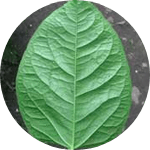
1. Identify
Our first step is to identify if you have an invasive plant. For a quick ID, you can send us some photos. Alternatively, we can carry out a full site survey to confirm the extent of the infestation.
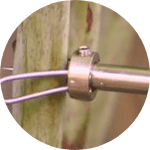
2. Solution
We will provide a range of treatment options individually tailored depending on your site requirements.
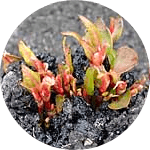
3. Quote
A detailed breakdown of costs for each phase of treatment will be provided, including on-going monitoring programmes with insurance backed guarantees.
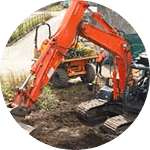
4. Removal
Our experienced and professional in-house teams will carry out the treatment to the highest of standards to achieve full eradication. All works are carried out in accordance with the INNSA Code of Practice.
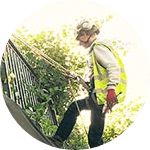
5. Treatment
A range of treatment solutions are available, from in-situ herbicide application to excavation and removal or burial. All carried out in-house by our experienced team.

